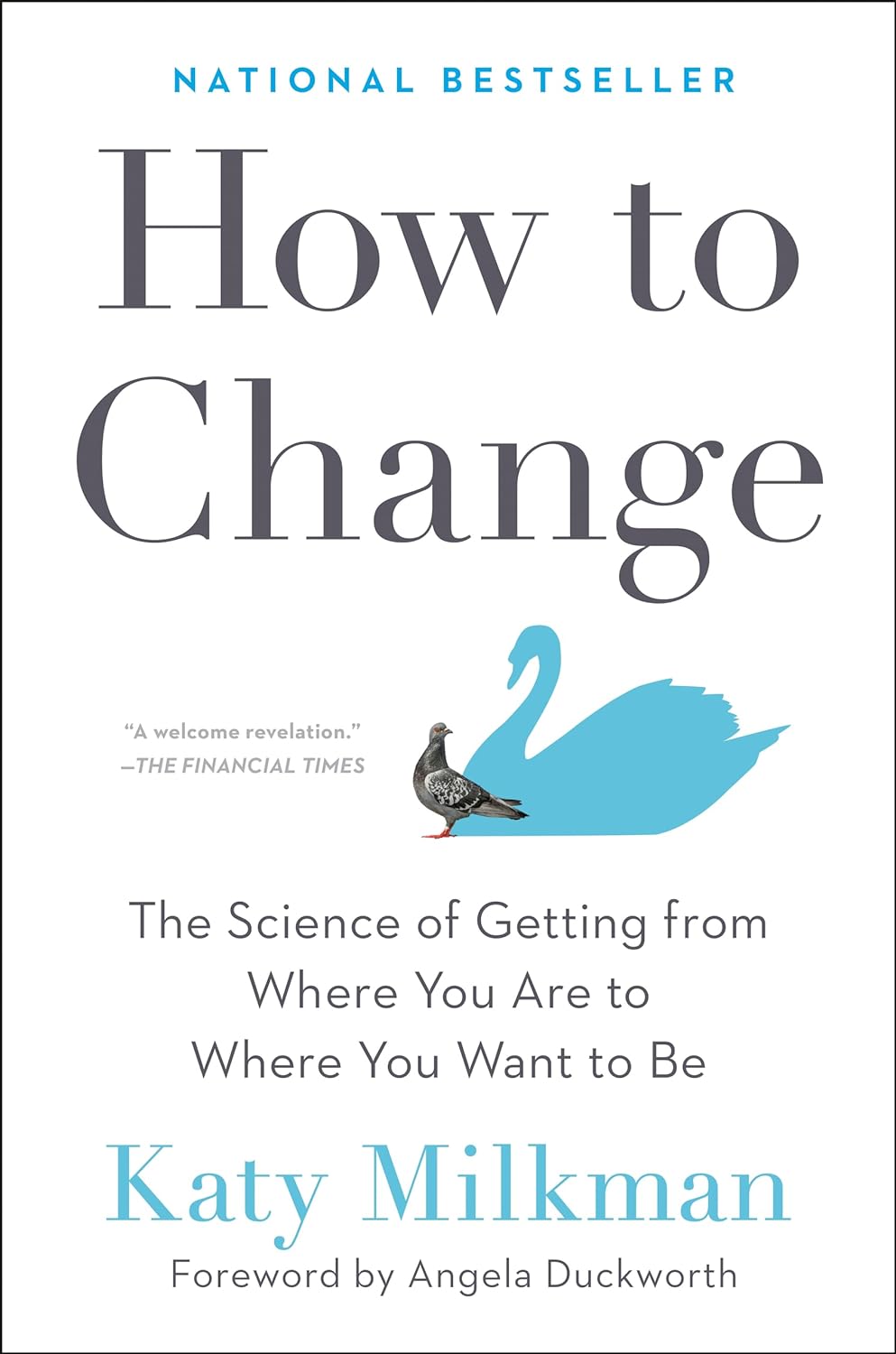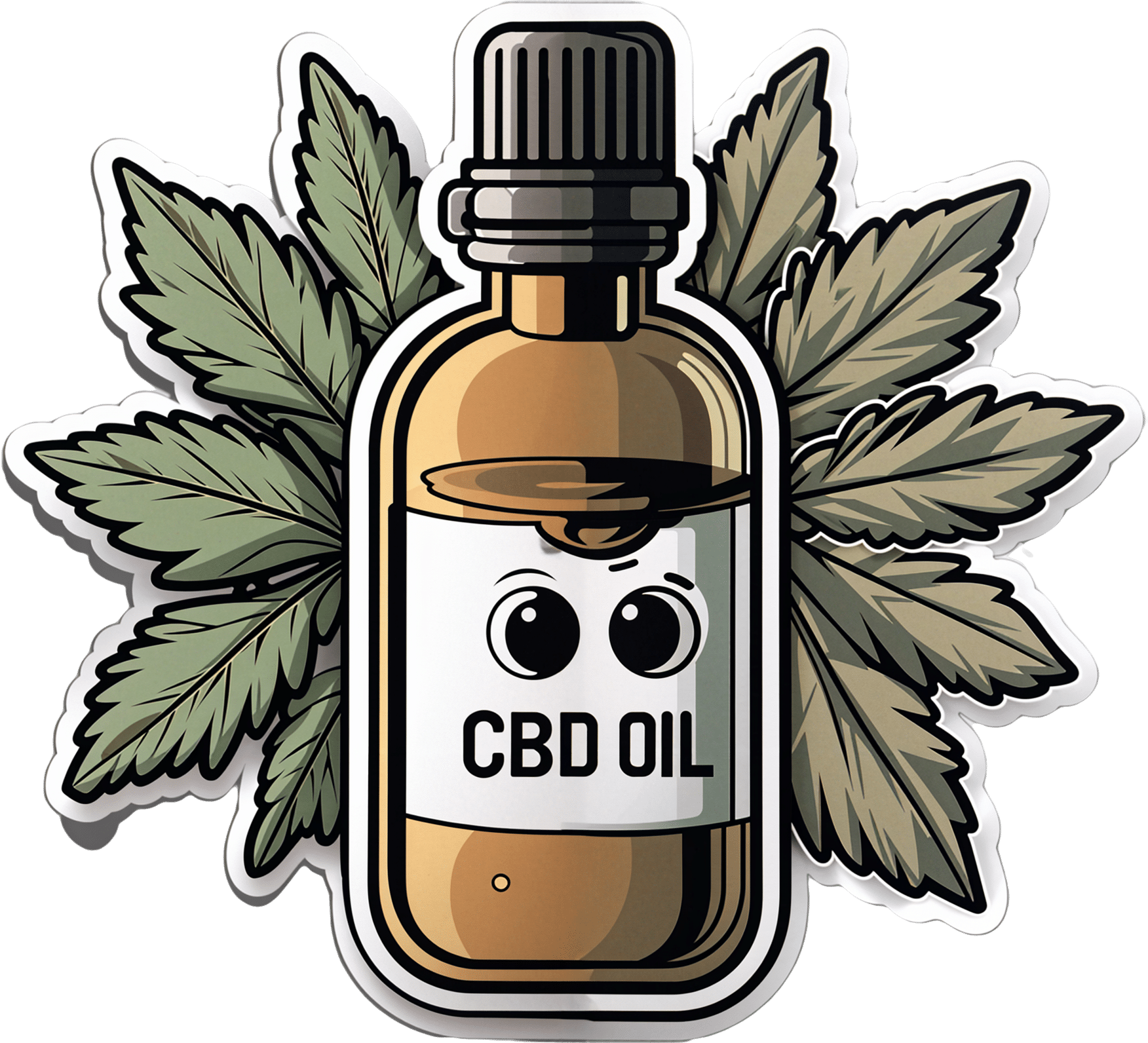
How to Change – by Katy Milkman
10almonds is reader-supported. We may, at no cost to you, receive a portion of sales if you purchase a product through a link in this article.
Sometimes it seems that we know everything we should be doing… We have systems and goals and principles, we know about the importance of habits, and we do our best to live them. Yet, somehow, life has other plans for us and things don’t quite come together they way they did in our genius masterplan.
So, what happened? And more importantly, what are we supposed to do about this? Katy Milkman has answers, right from the start.
Sometimes, it can be as simple as when we try to implement a change. It’s not that there’s a “wrong time” for a good change, so much that there are times that are much more likely to succeed than others… and those times can be identified and used.
Sometimes we’re falling prey to vices—which she explains how to overcome—such as:
- Impulsivity
- Procrastination
- Forgetfulness
- Laziness
We also learn some counterintuitive truths about what can boost or sabotage our confidence along the way!
Milkman writes in a compelling, almost narrative style, that makes for very easy reading. The key ideas, built up to by little (ostensibly true) stories and then revealed, become both clear and memorable. Most importantly, applicable.
Bottom line: this is a great troubleshooting guide for when you know how everything should be working, but somehow, it just doesn’t—and you’d like to fix that.
Click here to check out “How To Change” on Amazon, and get those changes rolling!
Don’t Forget…
Did you arrive here from our newsletter? Don’t forget to return to the email to continue learning!
Recommended
Learn to Age Gracefully
Join the 98k+ American women taking control of their health & aging with our 100% free (and fun!) daily emails:
-
Hanging Exercises For Complete Beginners & Older Adults
10almonds is reader-supported. We may, at no cost to you, receive a portion of sales if you purchase a product through a link in this article.
Hanging (not the kind with a gallows) is great for the heath, improving not just strength and mobility, but also—critically—looking after spinal health too. Amanda Raynor explains in this video how this exercise is accessible to anyone (unless you have no arms, in which case, sorry, this one is just not for you—though hanging by your legs will also give similar spinal benefits!).
Hanging out
Hanging can be done at home or at a park, with minimal equipment (a bar, a sturdy tree branch, etc).
Note: the greater the diameter of the bar, the more it will work your grip strength, and/but the harder it will be. So, it’s recommend to start with a narrow-diameter bar first.
Getting started:
- Start with a “dead hang”: grip the bar with hands shoulder-width apart, thumb wrapped around.
- Aim to hang without pulling up; build endurance gradually (10–30 seconds is fine at first).
- Work up to holding for 60 seconds in three sets as a fitness goal.
Progression:
- If unable to hang at all initially, use a chair or stool to support some body weight.
- Gradually reduce foot support to increase duration of free hanging.
- Start with 10 seconds, progressing by small increments (e.g: 15, 20, 25 seconds) until reaching 60 seconds.
Advanced variations:
- Move the body while hanging (e.g., circles, knee lifts).
- Experiment with different grips (overhand, underhand) for varied muscle engagement.
- Try scapular pulls or one-arm hangs for additional challenge and strength-building.
For more on all of this plus visual demonstrations, enjoy:
Click Here If The Embedded Video Doesn’t Load Automatically!
Want to learn more?
You might also like:
Take care!
Share This Post
-
The Medicinal Properties Of Bay Leaves
10almonds is reader-supported. We may, at no cost to you, receive a portion of sales if you purchase a product through a link in this article.
The humble bay leaf has more uses than just culinary!
How about for hair growth?
Popularly recommended on social media with the promise of long and glowing hair… Guess how many scientific studies back up this claim!
If you guessed zero, you guessed correctly. At least, we were not able to find any. In fact, the only paper on the entirety of PubMed (a large online database of available scientific literature from most, if not all, reputable scientific journals) to return a hit for the search string “bay leaf hair growth” was this one:
You may notice that that has nothing to do with hair growth, and rather returned the hit because the acne bacteria are known to “proliferate within sebum-blocked skin hair follicles”.
So let’s talk about that instead:
Against acne & skin inflammation
Well, for that, it works! The research that we mentioned above concluded that:
❝LNE significantly suppressed the expression of P. acnes-mediated proinflammatory cytokines, such as IL-1β, IL-6, and NLRP3. We also found that LNE inhibited the inflammatory transcription factor NF-κB in response to P. acnes. In addition, eucalyptol, which is the main constituent of LNE, consistently inhibited P. acnes-induced inflammatory signaling pathways. Moreover, LNE significantly ameliorated P. acnes-induced inflammation in a mouse model of acne. We suggest for the first time that LNE hold therapeutic value for the improvement of P. acnes-induced skin inflammation.❞
LNE = Laurus nobilis extract, i.e. bay leaf extract
Now, that’s all about acne-induced skin inflammation, but what about other kinds?
Against inflammation in general
Bay leaves have an abundance of antioxidant polyphenols, and what’s good against oxidation is good against inflammation. For example:
Laurus nobilis leaf extract controls inflammation by suppressing NLRP3 inflammasome activation
That anti-inflammatory action is more than skin-deep though, because…
Against IBD / ulcerative colitis
It’s good for the gut, too, for example in this study (with mice, but the bacteria affected are the same as we have), which found:
❝…bay leaves showed the best treatment effects on gut microbiota compositions; promoting the growth of Bifidobacteria and Lactobacillus in addition to producing high butyric acid levels. Meanwhile, the number of Clostridium and sulfate-reducing bacteria was significantly reduced. Conclusively, consuming bay leaves brought significant colon health benefits other than stimulating appetite for a better taste.❞
Note that all of those gut-related changes are beneficial to us, increasing things that are best increased, and reducing things that are best reduced.
Against diabetes
It’s good for the blood—and for the heart, but more on that later. First, about diabetes:
❝All three levels of bay leaves reduced serum glucose with significant decreases ranging from 21 to 26% after 30 d.
Total cholesterol decreased, 20 to 24%, after 30 days with larger decreases in low density lipoprotein (LDL) cholesterol of 32 to 40%. High density lipoprotein (HDL) cholesterol increased 29 and 20% in the groups receiving 1 and 2 g of bay leaves, respectively. Triglycerides also decreased 34 and 25% in groups consuming 1 and 2 g of bay leaves, respectively, after 30 d. There were no significant changes in the placebo group.
In summary, this study demonstrates that consumption of bay leaves, 1 to 3 g/d for 30 days, decreases risk factors for diabetes and cardiovascular diseases and suggests that bay leaves may be beneficial for people with type 2 diabetes.❞
Again, all those changes are good:
Bay Leaves Improve Glucose and Lipid Profile of People with Type 2 Diabetes
Good for the heart
This one’s quite straight forward. Bay leaf tea is indeed good for the heart,
- Literally: Evaluation of Daily Laurus nobilis Tea Consumption on Lipid Profile Biomarkers in Healthy Volunteers
- Metaphorically: Evaluation of daily Laurus nobilis tea consumption on anxiety and stress biomarkers in healthy volunteers
Of course, even that latter is also good for the heart literally, just, indirectly, by reducing anxiety and stress, thus indirectly benefiting the heart itself.
But even before that, it’s already very directly beneficial to cardiovascular health, per its significant improvements to the lipid profile.
Anything else?
So much else, but there’s only so much we can feature in one day, so if you’d like to learn more, we recommend this very comprehensive paper:
…which discusses many benefits in considerable detail, including…
❝The LN leaves have various biological activities, such as antioxidant, wound healing, antibacterial, analgesic, and anti-inflammatory activities. However, oxidative stress, cancer, diabetes, microbial infections, and inflammatory diseases are closely linked. The objective of this research is to characterize Laurus nobilis (LN) aromatic oil (AO) and evaluate its antioxidant, antidiabetic, antiobesity, antimicrobial, and antimutagenic bioactivities.
The plant AO showed potent antioxidant activity (IC50 = 2.2 ± 1.38) and has moderate anti-amylase (IC50 = 60.25 ± 1.25), anti-glucosidase (IC50 = 131.82 ± 0.1), and antilipase (IC50 = 83.17 ± 0.06) activities.
Moreover, LNAO showed potent antimicrobial activity against Staphylococcus aureus, Escherichia coli, Klebsiella pneumonia, Proteus vulgaris (MICs = 1.56 µg/mL), methicillin-resistant Staphylococcus aureus (MRSA) (MIC = 3.125 µg/mL) and Candida albicans (MIC = 0.195 µg/mL). The cytotoxicity results demonstrated that at a concentration of 1 mg/mL, LNAO has potent breast cancer (MCF-7), and hepatocellular carcinoma (Hep 3B) cancer cells inhibitory activities of 98% and 95%, respectively.
Importantly, we are the first to show that LNAO significantly hinders hepatocellular carcinoma spheroids’ formation capacity in a 3D model.
These results show that LNAO is a promising natural source with powerful antioxidant, antidiabetic, anticancer, and antimicrobial activities that could be exploited in the future to treat a variety of diseases.❞
Want to try some?
We don’t sell it, but you can buy leaves from your local supermarket and make bay leaf tea, or alternatively, if you prefer essential oil form, here for your convenience is an example product on Amazon 😎
Enjoy!
Share This Post
-
Pear vs Prickly Pear – Which is Healthier?
10almonds is reader-supported. We may, at no cost to you, receive a portion of sales if you purchase a product through a link in this article.
Our Verdict
When comparing pear to prickly pear, we picked the prickly.
Why?
Both of these fruits are fine and worthy choices, but the prickly pear wins out in nutritional density.
Looking at the macros to start with, the prickly pear is higher in fiber and lower in carbs, resulting in a much lower glycemic index. However, non-prickly pears are already low GI, so this is not a huge matter. Whether it’s pear’s GI of 38 or prickly pear’s GI of 7, you’re unlikely to experience a glucose spike.
In the category of vitamins, pear has a little more of vitamins B5, B9, E, K, and choline, but the margins are tiny. On the other hand, prickly pear has more of vitamins A, B1, B2, B3, B6, and C, with much larger margins of difference (except vitamin B1; that’s still quite close). Even before taking margins of difference into account, this is a slight win for prickly pear.
When it comes to minerals, things are more pronounced; pear has more manganese, while prickly pear has more calcium, iron, magnesium, phosphorus, potassium, selenium, and zinc.
In short, both pears are great (so do enjoy the pair), but prickly pear is the clear winner where one must be declared.
Want to learn more?
You might like to read:
Apple vs Pear – Which is Healthier?
Take care!
Share This Post
Related Posts
-
Can We Drink To Good Health?
10almonds is reader-supported. We may, at no cost to you, receive a portion of sales if you purchase a product through a link in this article.
Can we drink to good health?
We asked you for your thoughts on alcohol and heart health, and we got quite an even spread of results!
If perchance that’s too tiny to read, the figures were:
- 32% voted for “Alcohol is a relaxant, reduces stress, and can contain resveratrol too. It’s good for the heart!”
- 32% voted for: “Moderate alcohol consumption can be at least neutral for the health, if not positive ⚖️”
- 36% voted for: “Alcohol is bad for pretty much everything, including heart health ✋”
One subscriber who voted for “Alcohol is a relaxant, reduces stress, and can contain resveratrol too. It’s good for the heart!” added the following thoughts:
❝While it isn’t necessary to consume alcohol, moderate amounts can be beneficial and contribute to well-being through social activity, celebrations, etc.❞
That’s an interesting point, and definitely many people do see alcohol that way! Of course, that does not mean that one will find no social activities, celebrations, etc, in parts of the world where alcohol consumption is uncommon. Indeed, in India, wedding parties where no alcohol is consumed can go on for days!
But, “we live in a society” and all that, and while we’re a health newsletter not a social issues newsletter, it’d be remiss of us to not acknowledge the importance of socialization for good mental health—and thus the rest of our health too.
So, if indeed all our friends and family drink alcohol, it can certainly make abstaining more of a challenge.
On that note, let’s take a moment to consider “The French Paradox” (an observation of a low prevalence of ischemic heart disease despite high intakes of saturated fat, a phenomenon accredited to the consumption of red wine).
As it happens, a comprehensive review in “Circulation”, a cardiovascular health journal, has suggested the French Paradox may not be so paradoxical after all.
Research suggests it has more to do with other lifestyle factors (and historic under-reporting of cardiovascular disease by French doctors), which would explain why Japan has lower rates of heart disease, despite drinking little wine, and more beer and spirits.
So, our subscriber’s note may not be completely without reason! It’s just about the party, not the alcohol.
One subscriber who voted for “Moderate alcohol consumption can be at least neutral for the health, if not positive ⚖️” wrote:
❝Keeping in mind, moderate means one glass of wine for women a day and two for men. Hard alcohol doesn’t have the same heart benefits as wine❞
That is indeed the guideline according to some health bodies!
In other places with different guiding advisory bodies, that’s been dropped down to one a day for everyone (the science may be universal, but how government institutions interpret that is not).
About that wine… Specifically, red wine, for its resveratrol content:
While there are polyphenols such as resveratrol in red wine that could boost heart health, there’s so little per glass that you may need 100–1000 glasses to get the dosage that provides benefits in mouse studies. If you’re not a mouse, you might even need more.
To this end, many people prefer resveratrol supplementation. ← link is to an example product, but there are plenty more so feel free to shop around
A subscriber who voted for “Alcohol is bad for pretty much everything, including heart health ✋” says:
❝New guidelines suggest 1 to 2 drinks a week are okay but the less the better.❞
If you haven’t heard these new guidelines, we’ll mention again: every government has its own official bodies and guidelines so perhaps your local guidelines differ, but for example here’s what that World Health Organization has to say (as of January this year):
WHO: No level of alcohol consumption is safe for our health
So, whom to believe? The governments who hopefully consider the welfare of their citizenry more important than the tax dollars from alcohol sales, or the World Health Organization?
It’s a tough one, but we’ll always err on the side of the science.
Don’t Forget…
Did you arrive here from our newsletter? Don’t forget to return to the email to continue learning!
Learn to Age Gracefully
Join the 98k+ American women taking control of their health & aging with our 100% free (and fun!) daily emails:
-
CBD Oil
10almonds is reader-supported. We may, at no cost to you, receive a portion of sales if you purchase a product through a link in this article.
Q&A with the 10almonds Team
Q: Very interested in this article on CBD oil in the states. hope you do another one in the future with more studies done on people and more information on what’s new as far as CBD oil goes
A: We’re glad you enjoyed it! We’ll be sure to revisit CBD in the future—partly because it was a very popular article, and partly because, as noted, there is a lot going on there, research-wise!
And yes, we prefer human studies rather than mouse/rat studies where possible, too, and try to include those where we find them. In some cases, non-human animal studies allow us to know things that we can’t know from human studies… because a research institution’s ethics board will greenlight things for mice that it’d never* greenlight for humans.
Especially: things that for non-human animals are considered “introduction of external stressors” while the same things done to humans would be unequivocally called “torture”.
Animal testing in general is of course a moral quagmire, precisely because of the suffering it causes for animals, while the research results (hopefully) can be brought to bear to reduce to suffering of humans. We’re a health and productivity newsletter, not a philosophical publication, but all this to say: we’re mindful of such too.
And yes, we agree, when studies are available on humans, they’re always going to be better than the same study done on mice and rats.
As a topical aside, did you know there’s a monument to laboratory mice and all they’ve (however unintentionally) done for us?
❝The quirky statue depicts an anthropomorphic mouse as an elderly woman, complete with glasses balanced atop its nose. Emerging from two knitting needles in its hands is the recognizable double-helix of a strand of DNA.❞
~ Smithsonian Magazine
Don’t Forget…
Did you arrive here from our newsletter? Don’t forget to return to the email to continue learning!
Learn to Age Gracefully
Join the 98k+ American women taking control of their health & aging with our 100% free (and fun!) daily emails:
-
Recognize The Early Symptoms Of Parkinson’s Disease
10almonds is reader-supported. We may, at no cost to you, receive a portion of sales if you purchase a product through a link in this article.
Parkinson’s disease is a degenerative condition with wide-reaching implications for health. While there is currently no known cure, there are treatments, so knowing about it sooner rather than later is important.
Spot The Signs
There are two main kinds of symptoms, motor and non-motor.
Motor symptoms include:
- trembling that occurs when muscles are relaxed; often especially visible in the fingers
- handwriting changes—not just because of the above, but also often getting smaller
- blank expression, on account of fewer instruction signals getting through to the face
- frozen gait—especially difficulty starting walking, and a reduced arm swing
Non-motor symptoms include:
- loss of sense of smell—complete, or a persistent reduction of
- sleepwalking, or sleep-talking, or generally acting out dreams while asleep
- constipation—on an ongoing basis
- depression/anxiety, especially if there was no prior history of these conditions
For more detail on each of these, as well as what steps you might want to take, check out what Dr. Luis Zayas has to say:
Click Here If The Embedded Video Doesn’t Load Automatically!
Want to learn more?
You might also like to read:
Citicoline vs Parkinson’s (And More)
Take care!
Don’t Forget…
Did you arrive here from our newsletter? Don’t forget to return to the email to continue learning!
Learn to Age Gracefully
Join the 98k+ American women taking control of their health & aging with our 100% free (and fun!) daily emails:








